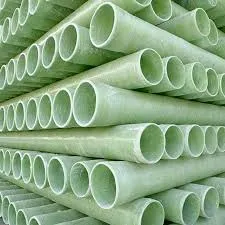
-
 Afrikaans
Afrikaans -
 Albanian
Albanian -
 Amharic
Amharic -
 Arabic
Arabic -
 Armenian
Armenian -
 Azerbaijani
Azerbaijani -
 Basque
Basque -
 Belarusian
Belarusian -
 Bengali
Bengali -
 Bosnian
Bosnian -
 Bulgarian
Bulgarian -
 Catalan
Catalan -
 Cebuano
Cebuano -
 China
China -
 China (Taiwan)
China (Taiwan) -
 Corsican
Corsican -
 Croatian
Croatian -
 Czech
Czech -
 Danish
Danish -
 Dutch
Dutch -
 English
English -
 Esperanto
Esperanto -
 Estonian
Estonian -
 Finnish
Finnish -
 French
French -
 Frisian
Frisian -
 Galician
Galician -
 Georgian
Georgian -
 German
German -
 Greek
Greek -
 Gujarati
Gujarati -
 Haitian Creole
Haitian Creole -
 hausa
hausa -
 hawaiian
hawaiian -
 Hebrew
Hebrew -
 Hindi
Hindi -
 Miao
Miao -
 Hungarian
Hungarian -
 Icelandic
Icelandic -
 igbo
igbo -
 Indonesian
Indonesian -
 irish
irish -
 Italian
Italian -
 Japanese
Japanese -
 Javanese
Javanese -
 Kannada
Kannada -
 kazakh
kazakh -
 Khmer
Khmer -
 Rwandese
Rwandese -
 Korean
Korean -
 Kurdish
Kurdish -
 Kyrgyz
Kyrgyz -
 Lao
Lao -
 Latin
Latin -
 Latvian
Latvian -
 Lithuanian
Lithuanian -
 Luxembourgish
Luxembourgish -
 Macedonian
Macedonian -
 Malgashi
Malgashi -
 Malay
Malay -
 Malayalam
Malayalam -
 Maltese
Maltese -
 Maori
Maori -
 Marathi
Marathi -
 Mongolian
Mongolian -
 Myanmar
Myanmar -
 Nepali
Nepali -
 Norwegian
Norwegian -
 Norwegian
Norwegian -
 Occitan
Occitan -
 Pashto
Pashto -
 Persian
Persian -
 Polish
Polish -
 Portuguese
Portuguese -
 Punjabi
Punjabi -
 Romanian
Romanian -
 Russian
Russian -
 Samoan
Samoan -
 Scottish Gaelic
Scottish Gaelic -
 Serbian
Serbian -
 Sesotho
Sesotho -
 Shona
Shona -
 Sindhi
Sindhi -
 Sinhala
Sinhala -
 Slovak
Slovak -
 Slovenian
Slovenian -
 Somali
Somali -
 Spanish
Spanish -
 Sundanese
Sundanese -
 Swahili
Swahili -
 Swedish
Swedish -
 Tagalog
Tagalog -
 Tajik
Tajik -
 Tamil
Tamil -
 Tatar
Tatar -
 Telugu
Telugu -
 Thai
Thai -
 Turkish
Turkish -
 Turkmen
Turkmen -
 Ukrainian
Ukrainian -
 Urdu
Urdu -
 Uighur
Uighur -
 Uzbek
Uzbek -
 Vietnamese
Vietnamese -
 Welsh
Welsh -
 Bantu
Bantu -
 Yiddish
Yiddish -
 Yoruba
Yoruba -
 Zulu
Zulu
fiberglass reinforced pipe
Understanding Fiberglass Reinforced Pipe Applications and Benefits
Fiberglass reinforced pipe (FRP) has emerged as a revolutionary solution in various industries over the past few decades. This material is composed of a polymer matrix reinforced with fiberglass, making it lightweight, strong, and corrosion-resistant. As industries look for alternatives to traditional piping materials such as steel and concrete, FRP offers a compelling set of advantages that make it an attractive option.
One of the most significant benefits of fiberglass reinforced pipe is its exceptional resistance to corrosion. Traditional materials, especially steel, are prone to rust and degradation over time when exposed to harsh chemicals and environmental conditions. In contrast, FRP pipes are designed to withstand the corrosive effects of a wide range of substances, making them ideal for applications in chemical processing, wastewater treatment, and oil and gas transportation. This resistance not only extends the lifespan of the pipes but also reduces maintenance costs and the need for frequent replacements.
Lightweight characteristics are another advantage of fiberglass reinforced piping. Compared to conventional materials, FRP pipes are considerably lighter, making installation easier and less labor-intensive. This feature can lead to reduced transportation costs and faster installation times, which is a crucial factor in project timelines. Additionally, the inherent flexibility of fiberglass allows it to withstand pressure fluctuations, reducing the risk of bursting or failure under demanding conditions.
fiberglass reinforced pipe

The versatility of fiberglass reinforced pipe makes it suitable for a wide array of applications
. Industries such as water and wastewater management, mining, and construction utilize FRP for transporting fluids and gases. The unique properties of FRP also enable custom designs tailored to specific project requirements. For instance, engineers can modify the diameter, length, and thickness of the pipes to suit particular applications, ensuring optimal performance for each system.Furthermore, fiberglass reinforced pipe is environmentally friendly, which is an increasingly important consideration in today’s industrial landscape. The manufacturing process for FRP typically generates fewer pollutants compared to that of traditional pipes, and the material itself is fully recyclable. As governments and organizations strive to meet sustainability goals, the adoption of green materials like FRP becomes essential.
Another noteworthy aspect of fiberglass reinforced pipes is their thermal insulation properties. These pipes can effectively maintain the temperature of the fluid being transported, which is particularly beneficial in industries that handle sensitive or temperature-controlled substances. This insulation ability minimizes energy loss and contributes to improved overall efficiency in various processes.
In conclusion, fiberglass reinforced pipe presents a plethora of advantages, from its corrosion resistance and lightweight nature to its versatility and environmental benefits. As industries increasingly recognize the limitations of traditional piping materials, FRP stands out as a superior alternative that meets modern demands. Employing FRP can lead to significant long-term savings and improved operational efficiency, making it a wise investment for industries seeking reliable and innovative piping solutions. The future of construction and infrastructure development may well rely heavily on this remarkable material.









